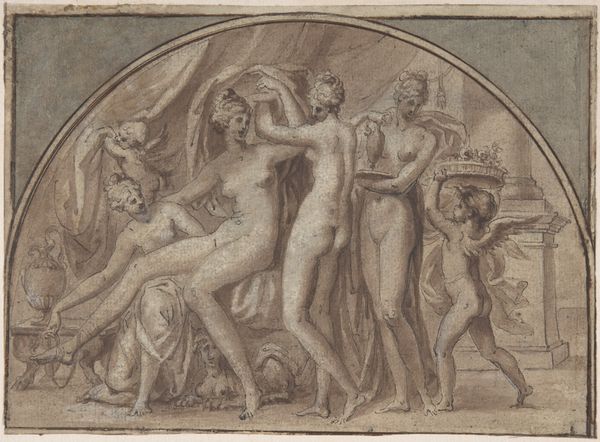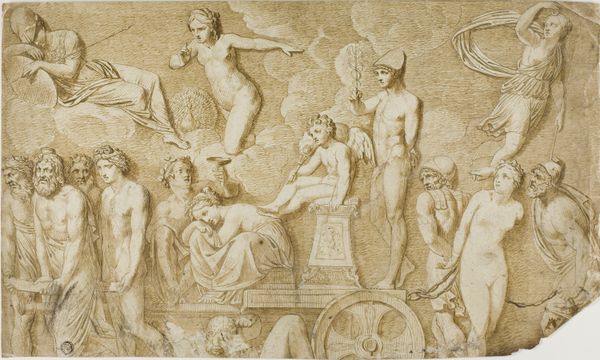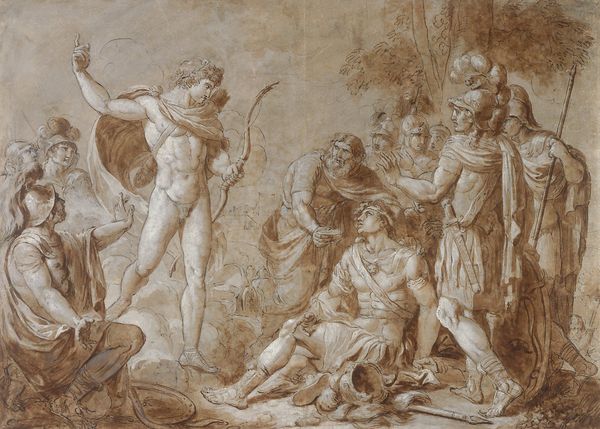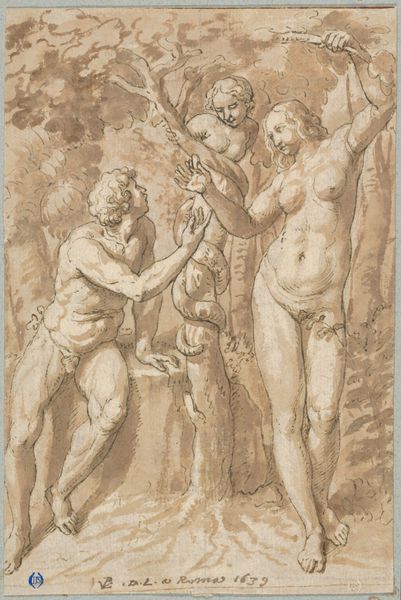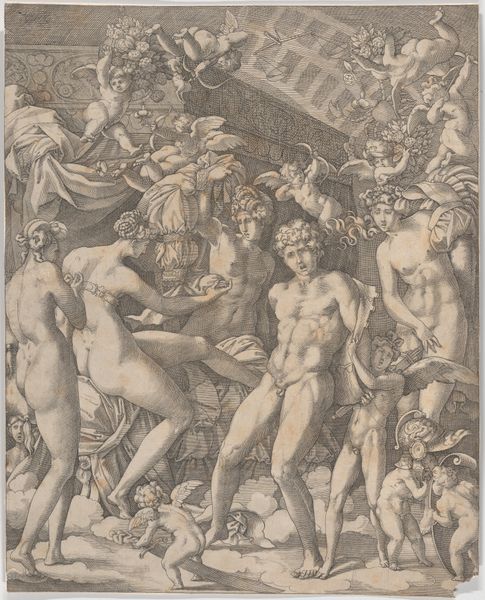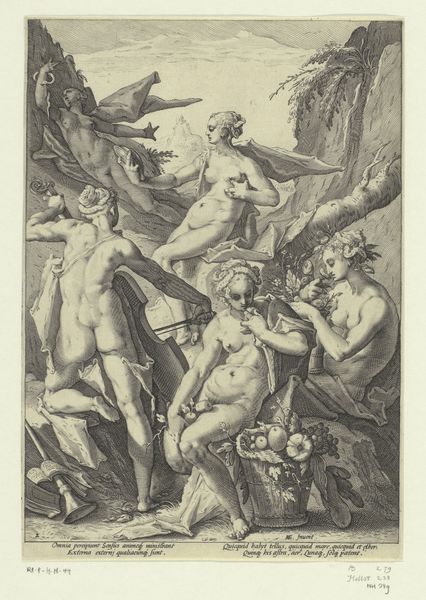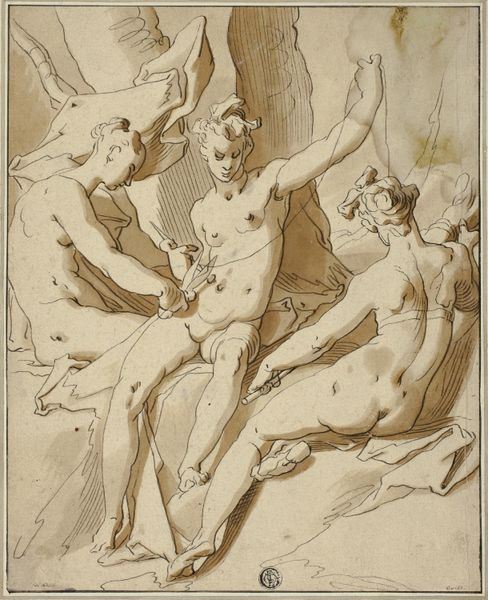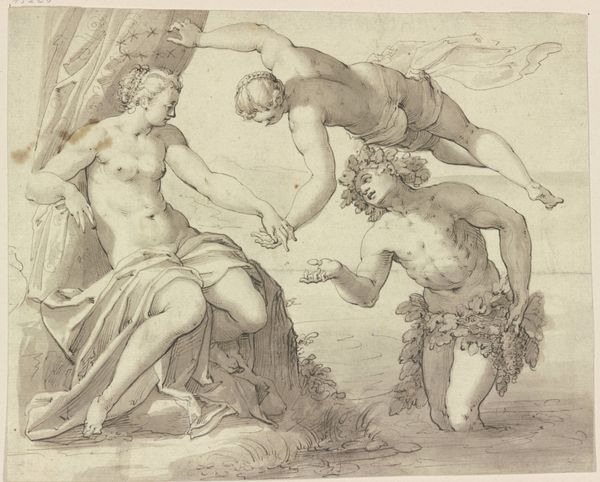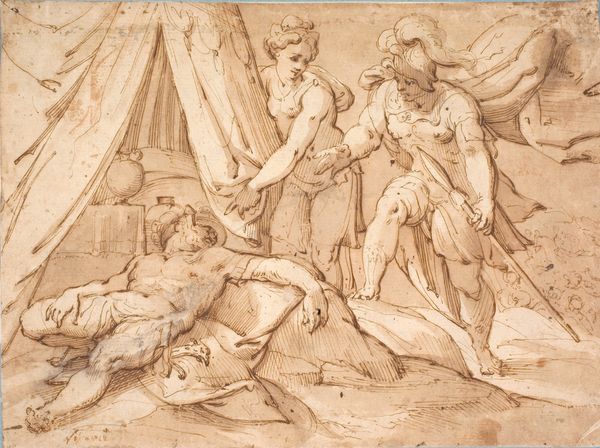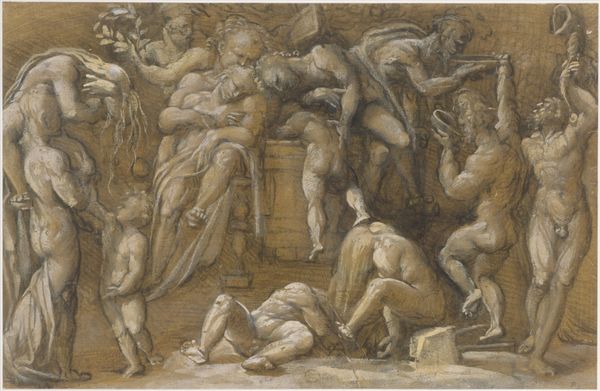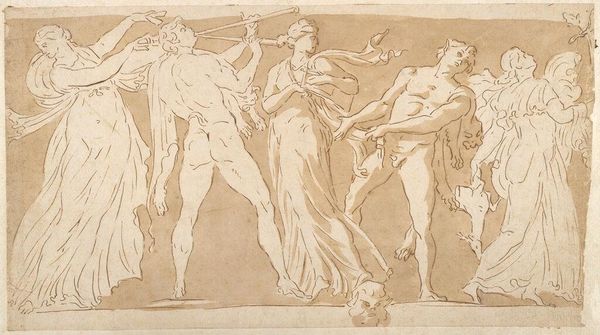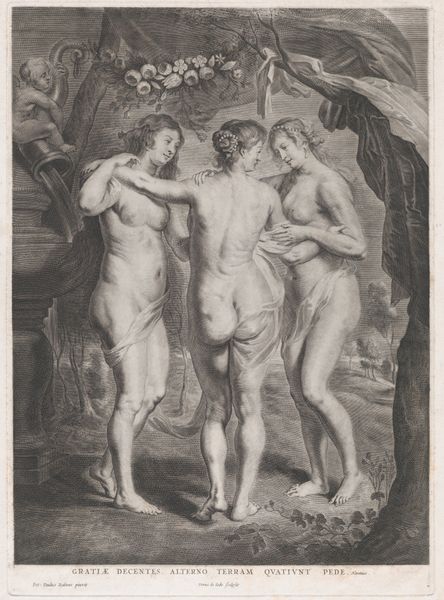
Meleager Presents to Atalanta the Head of the Calydonian Boar 1795 - 1805
0:00
0:00
drawing, print, pencil, engraving
#
drawing
#
neoclacissism
#
allegory
# print
#
pencil sketch
#
dog
#
landscape
#
figuration
#
pencil
#
history-painting
#
academic-art
#
engraving
Dimensions: 6 15/16 x 14 1/4 in. (17.7 x 36.2cm)
Copyright: Public Domain
Editor: Here we have Guillaume Boichot's "Meleager Presents to Atalanta the Head of the Calydonian Boar," a pencil and engraving work dating from 1795 to 1805. It strikes me as quite a formal composition, almost like a frieze. What compositional elements stand out to you? Curator: Formally, consider how Boichot manipulates line and tone to create a sense of depth within a relatively shallow pictorial space. Note the crisp, clean lines defining the figures in the foreground, contrasting with the softer, more suggestive strokes used for the background elements. What is the effect of this contrast in line quality? Editor: It seems to flatten the space, pushing the background further back while emphasizing the foreground figures and action. Is that intentional, to draw attention to the main interaction between Meleager and Atalanta? Curator: Precisely. Boichot is employing a strategic visual hierarchy. Furthermore, observe the arrangement of the figures, their poses and gestures. Do you notice a recurring motif? Editor: They all seem to be turned toward or gazing at Meleager and Atalanta, creating a flow, or a rhythm across the image. I see some darker lines under their feet, is it dirt? Curator: It’s likely the ground-plane, though less important than its function, which is to establish a base. But look at the figures themselves and focus on their gestures. Are there oppositions that interest you? Editor: Well, Meleager presents the boar's head, and Atalanta is reaching out to receive it, so they mirror each other. Are they central to the piece or are the figures more dynamically spaced across the work? Curator: The central grouping is key. Boichot uses this symmetry to underscore their connection while utilizing the other figures to build rhythm. The scene’s arrangement—horizontal orientation, relatively shallow depth of field, clear organization of figures and space, combined with balance—results in a harmoniously balanced scene that embodies Neoclassical ideals. What have you gathered from this? Editor: I hadn't fully appreciated how Boichot manipulates line and form to create a formal composition, but I see it now. This artwork is so controlled! Curator: Yes, and by observing those deliberate design elements, we reveal the essence of Boichot's work.
Comments
No comments
Be the first to comment and join the conversation on the ultimate creative platform.
